Binding refers to the process of a multi paged document being arranged then fastened together. There are many different types of binding methods, so you are likely to find a method that fits your project most appropriately. Along with holding the document together, the binding method can also help further communicate the style and message of your piece.
Saddle Stitch
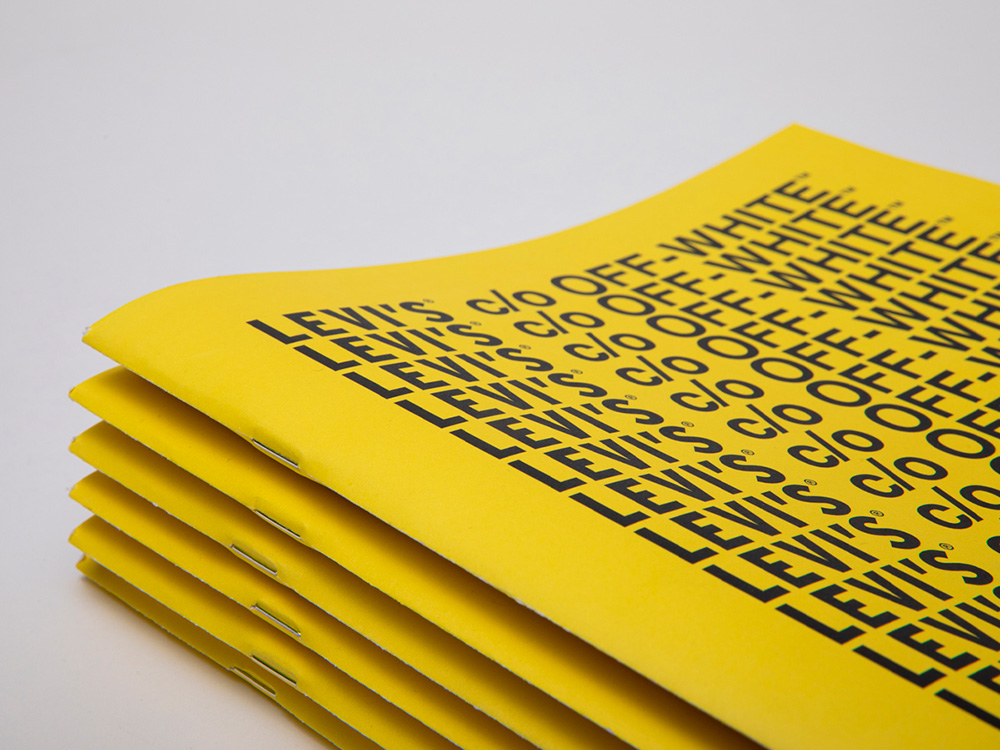
Saddle stitching is one of the most common and economical types of binding today. Done with staples, this type of binding is typically seen on magazines, comic books, or brochures. For saddle stitching, folded sheets of paper are nested within another then secured with staples. In order for a booklet to be saddle stitched, the page count must be divisible by 4 (including front and back covers) and be around 8-80 pages.
Loop Stitch
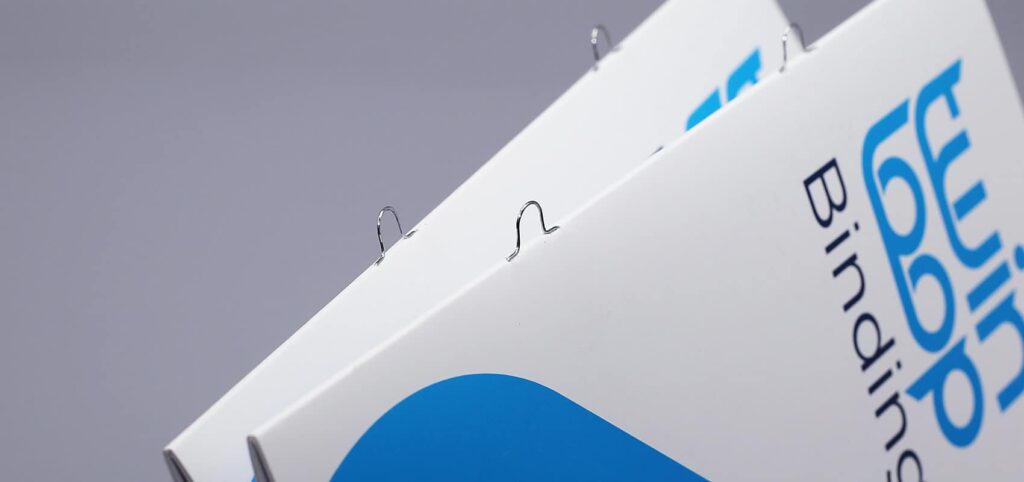
Loop stitching is similar to saddle stitching in the fact that folded sheets of paper are nested within another then secured with staples. Therefore, as with saddle stitching, the page count must be divisible by 4 (including front and back covers) and be around 8-80 pages. However, instead of being fastened with a regular staple, loop binded pieces are fastened with a special loop staple, which allows it to be inserted into three ring binders. Loop stitching is best for work manuals, health and safety guides, B2B catalogs, menus, and more.
Stab (Side) Stitch
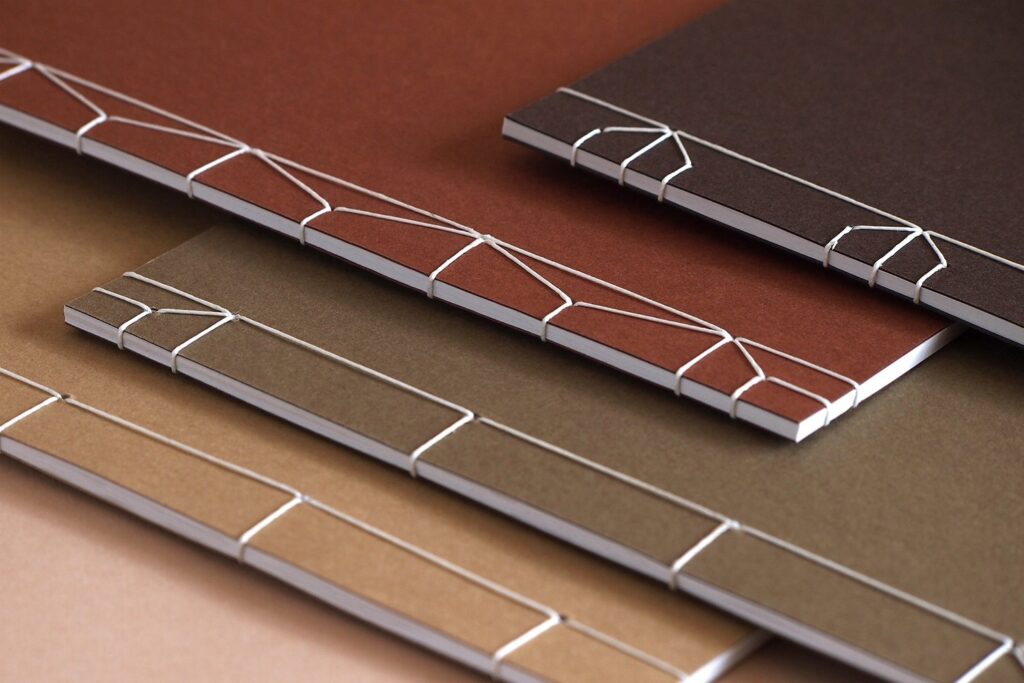
Stab binding (also referred to as side stitching, or Japanese stab binding) is a decorative binding method with lots of variations. For stab binding, a wire or thread is stabbed into the front cover, through the book block, and out the back cover, rather than along the spine. In some cases, the spine is covered to hide the binding, but oftentimes, the binding is done in such a way that incorporates it as part of the design! This binding method can be around 2-300 pages, and is an economical binding option.
Sewn Bound
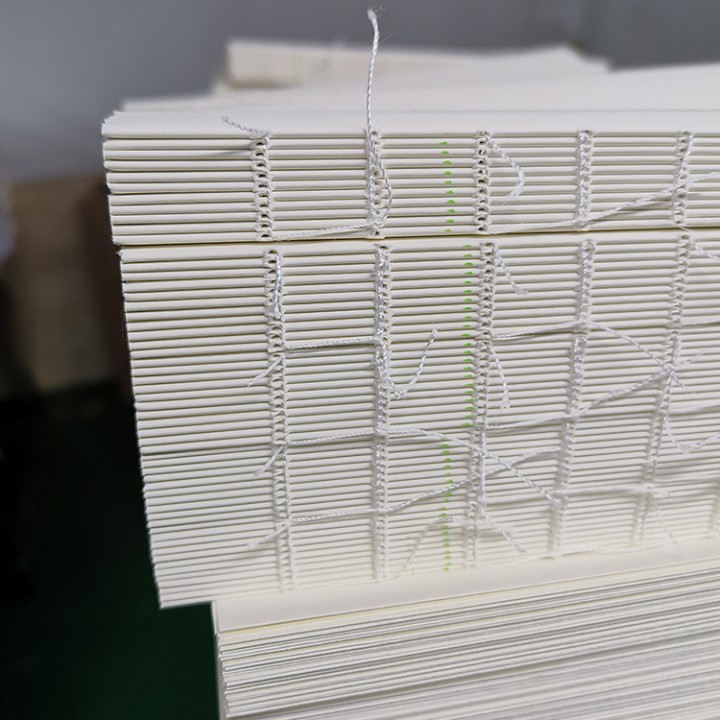
With sewn binding, pages of the book are first separated into groups of 8, 16, or 24, called signatures. These signatures are then fastened together individually with a thread. Once each signature has been sewn, the signatures are put in order and sewn together to create the book block. The book block is then coated with an adhesive on its edge, to ensure the signatures stay in place. A cover is then added to the book block, to ensure its stability and for aesthetic purposes.
Sewn binding is a popular binding method for books and is extremely durable against wear and tear. However, it requires special equipment and is more time consuming than any other binding method, making it costly
Perfect Binding
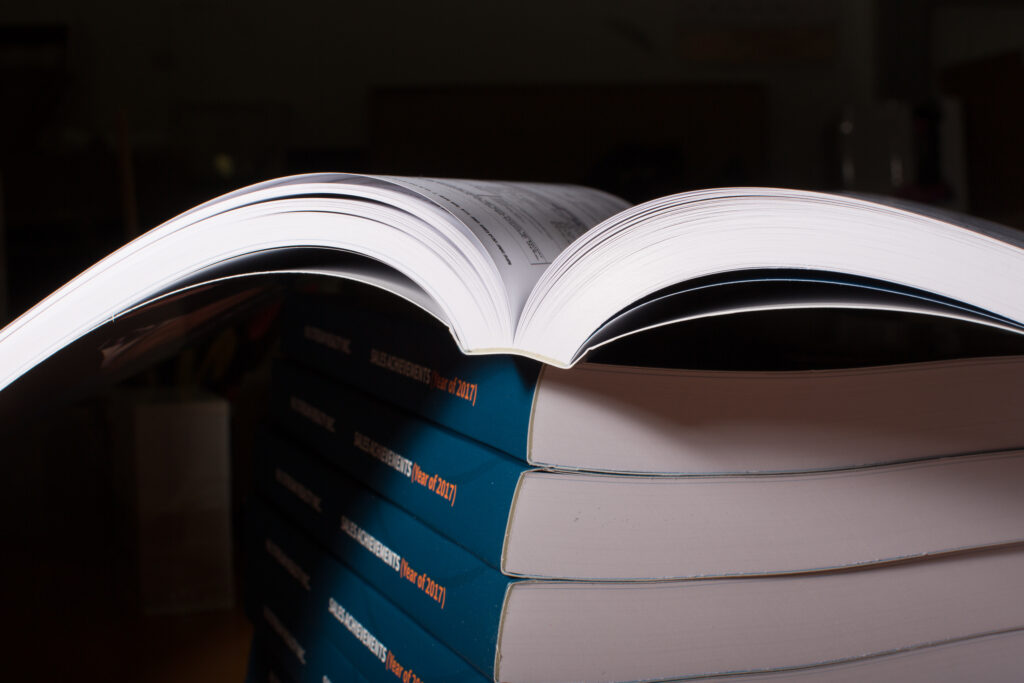
Perfect binding is a binding method commonly used by bookmakers. With perfect binding, the pages are separated into signatures, put into order, then have their spines cut. The cut spines are then coated with a glue to adhere the signatures together, making the book block. Often, the book block has a cover added, but it is not required.
Perfect binding can hold from around 50-250 pages and is an affordable method of binding for books.
Screw Bound
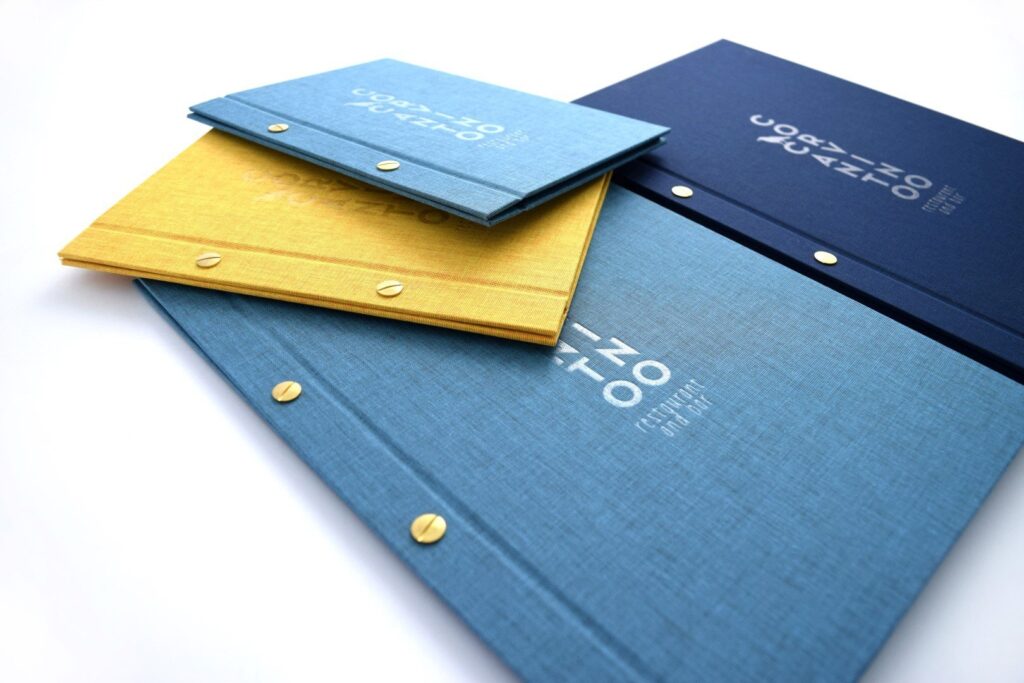
Screw binding is a type of binding that utilizes screw posts, or sometimes referred to as Chicago screws. For screw binding, holes are first drilled through the entire document that is to be bound. Then, the barrel lost end of the screw is inserted into the hole and secured with the cap screw. Screw binding can typically hold 16-400 pages, and is often used for swatch books.
Spiral Bound
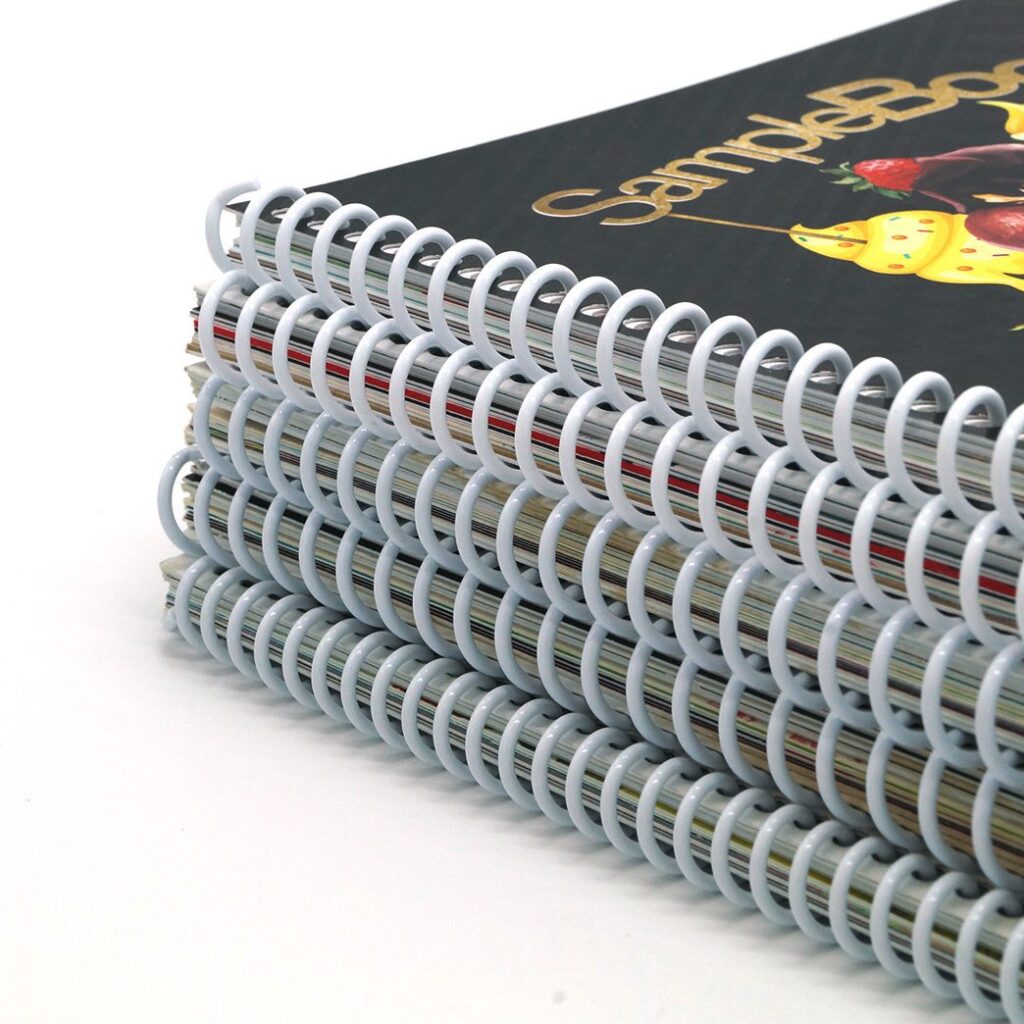
Spiral binding is a common binding method that binds together a cover and pages using a coil made out of either plastic or metal. For spiral binding, many holes are first punched through the cover and book block in even intervals. The metal or plastic coil is then fed through all the holes and crimped at the end to ensure it stays in place. Spiral binding is typically seen with notebooks, planners, sketchbooks, and more.
Wire-O Bound
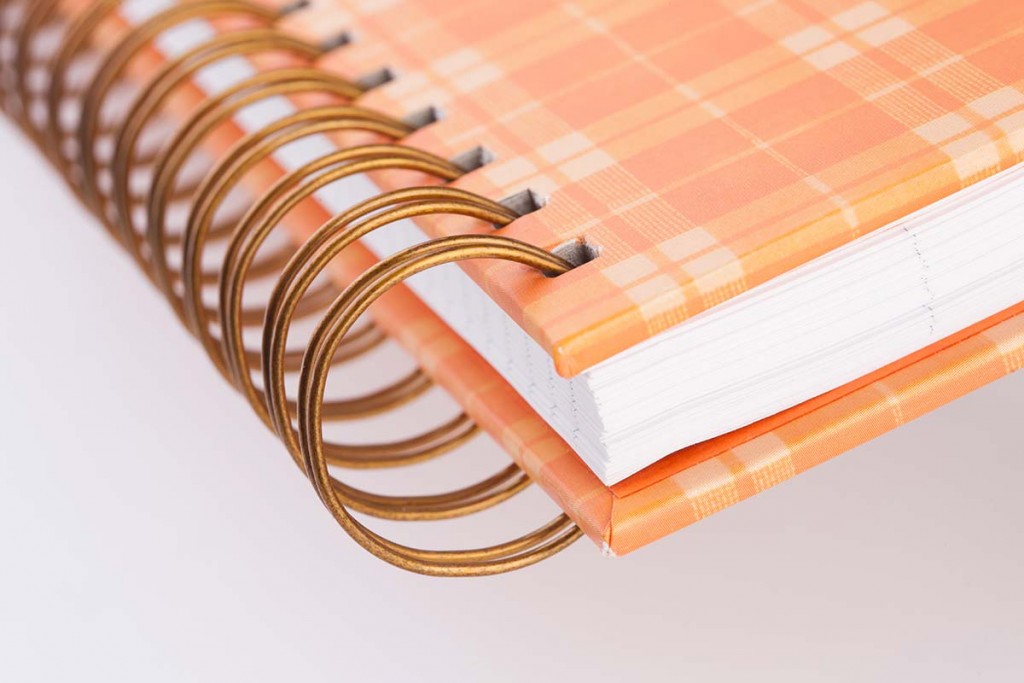
Wire-o binding (sometimes just referred to as wire binding) is a slightly similar method to spiral binding. Similarly to spiral binding, many holes are punched through the cover and book block in even intervals. Then, a wire loop (which are available in many different sizes, colors, and styles) is threaded through the bunch holes to form a bind. Wire-o binding is a popular method for sketchbooks, planners, manuals, and more.